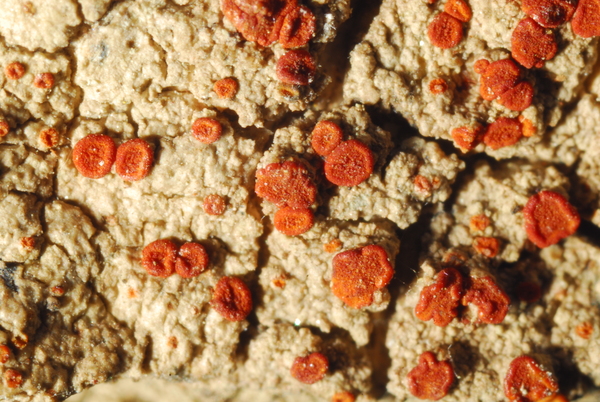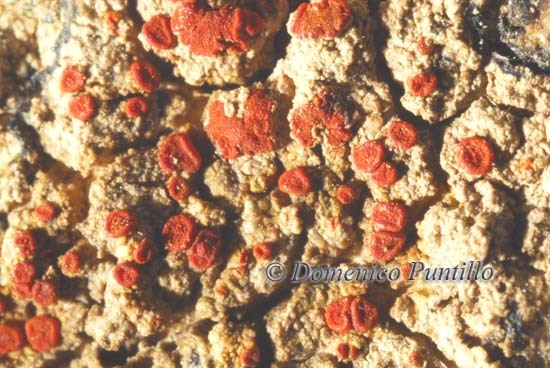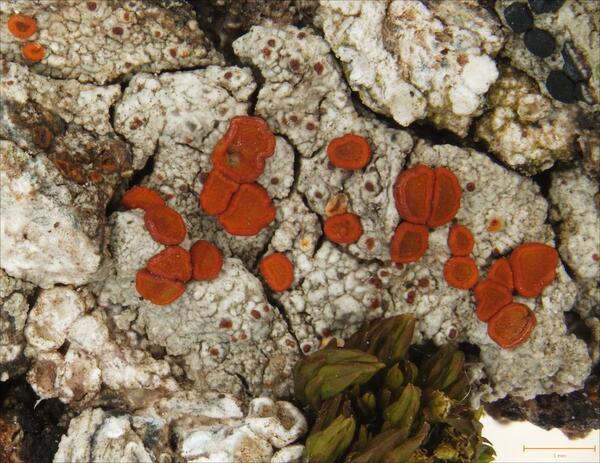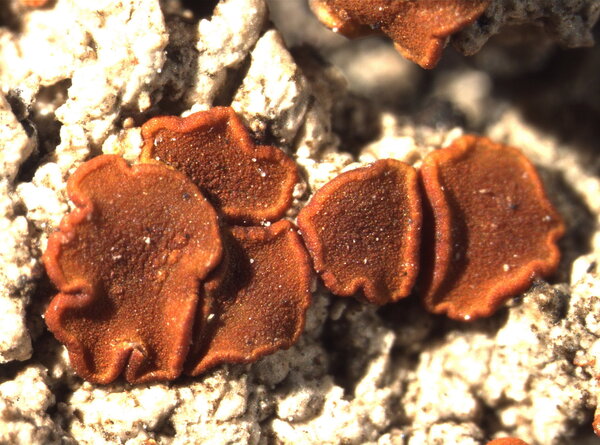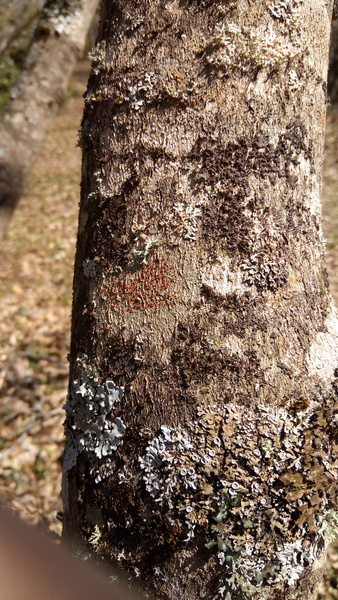Blastenia ferruginea (Huds.) A. Massal.
Flora, 35: 574, 1852. Basionym: Lichen ferrugineus Huds. - Fl. Angl.: 444, 1762.
Synonyms: Biatora ferruginea (Huds.) Fr.; Blastenia ferruginea var. corticicola (Flot.) Anzi; Callopisma ferrugineum (Huds.) Trevis.; Caloplaca aurantiaca (Lightf.) Th. Fr. non auct.; Caloplaca ferruginea (Huds.) Th. Fr.; Placodium ferrugineum (Huds.) Hepp
Description: Thallus crustose, episubstratic, pale grey to almost white, smooth to usually warted, forming up to 5 cm wide patches, sometimes delimited by a blackish prothallus. Apothecia common, biatorine/zeorine, sessile and constricted at base, (0.5-)1-2(-2.5) mm across, with a rust red, usually flat disc and a concolorous, persistent, often flexuose proper margin. Proper exciple prosoplectenchymatous, non-amyloid, K+ red, C+ purple in section; epithecium orange-brown, granular, K+ red, C-; hymenium colourless, (60-)70-100(-130) µm high, not inspersed with oil droplets, amyloid; paraphyses simple or sparingly branched in upper part, 1.5-2 μm thick, the apical cells 2.5-3 μm wide; hypothecium colourless, not amyloid. Asci 8-spored, clavate, functionally unitunicate, apically thickened with a broad internal beak, the inner part of apex and external cap I+ blue, Teloschistes-type. Ascospores 2-celled, polarilocular, hyaline ellipsoid, 12-18 x 6-10 μm, the equatorial thickening (“septum”) (4-)6-7(-8) μm. Pycnidia red in apical parts. Conidia bacilliform, rarely narrowly ellipsoid, 3-5 x 1-1.5 μm. Photobiont chlorococcoid. Spot tests: thallus K-, C-, KC-, P-; apothecia K+ red; pycnidia and apothecial margin K+ red, C+ purple in section. Chemistry: non-chlorinated anthraquinones in apothecial disc; chlorinated anthraquinones in exciple and pycnidial wall; thallus without or rarely with traces of anthraquinones; Cinereorufa-green pigment in prothallus.
Growth form: Crustose
Substrata: bark
Photobiont: green algae other than Trentepohlia
Reproductive strategy: mainly sexual
Commonnes-rarity: (info)
Alpine belt: absent
Subalpine belt: absent
Montane belt: extremely rare
Dry submediterranean belt: rather common
Humid submediterranean belt: rather common
Padanian area: extremely rare
pH of the substrata:
1 2 3 4 5
Solar irradiation:
1 2 3 4 5
Aridity:
1 2 3 4 5
Eutrophication:
1 2 3 4 5
Poleotolerance:
0 1 2 3
Altitudinal distribution:
1 2 3 4 5 6
Rarity
absent
extremely rare
very rare
rare
rather rare
rather common
common
very common
extremely common
Loading data...
Occurrence data
Predictive map
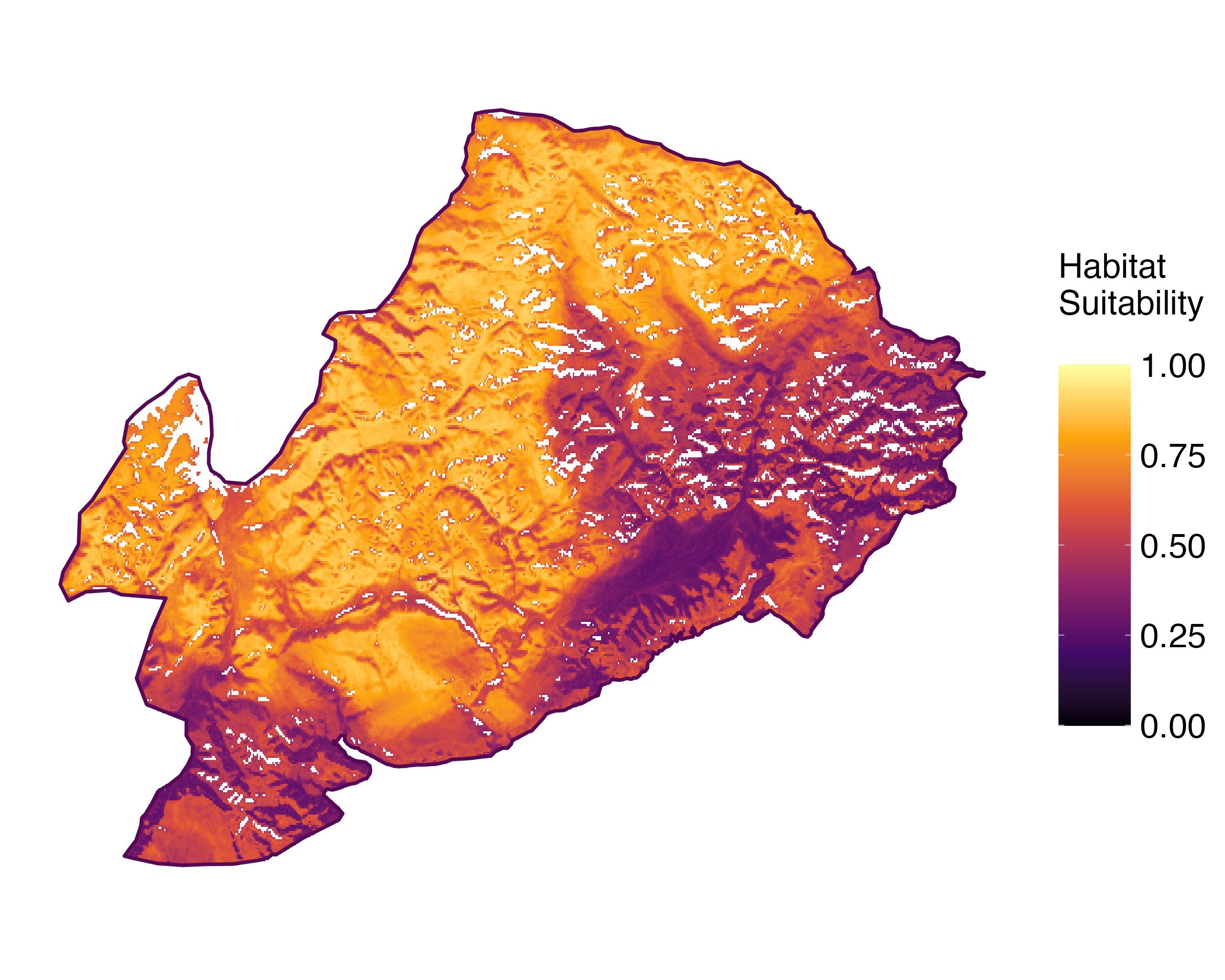 Current prediction (1981-2010)
Current prediction (1981-2010) Future prediction (2071-2100) SSP 1-2.6
Future prediction (2071-2100) SSP 1-2.6 Future prediction (2071-2100) SSP 5-8.5Predictive maps according to Francesconi et al. 2025
Future prediction (2071-2100) SSP 5-8.5Predictive maps according to Francesconi et al. 2025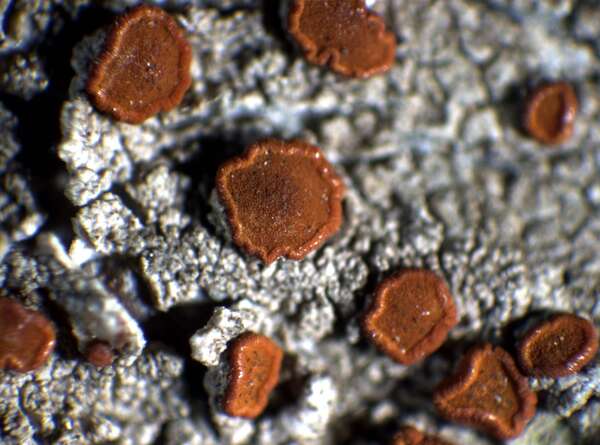
P.L. Nimis; Owner: Department of Life Sciences, University of Trieste
Herbarium: TSB (29646)
2001/12/03
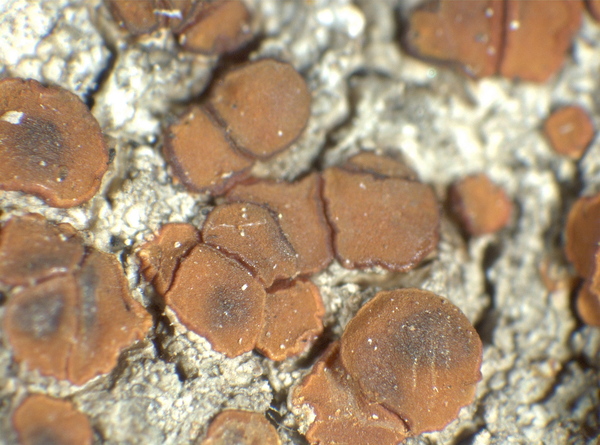
P.L.Nimis; Owner: Department of Life Sciences, University of Trieste
Herbarium: TSB (31774)
2008.03.03
Growth form: Crustose
Substrata: bark
Photobiont: green algae other than Trentepohlia
Reproductive strategy: mainly sexual
Commonnes-rarity: (info)
Alpine belt: absent
Subalpine belt: absent
Montane belt: extremely rare
Dry submediterranean belt: rather common
Humid submediterranean belt: rather common
Padanian area: extremely rare
pH of the substrata:
| 1 | 2 | 3 | 4 | 5 |
Solar irradiation:
| 1 | 2 | 3 | 4 | 5 |
Aridity:
| 1 | 2 | 3 | 4 | 5 |
Eutrophication:
| 1 | 2 | 3 | 4 | 5 |
Poleotolerance:
| 0 | 1 | 2 | 3 |
Altitudinal distribution:
| 1 | 2 | 3 | 4 | 5 | 6 |
Rarity
absent
extremely rare
very rare
rare
rather rare
rather common
common
very common
extremely common
Loading data...
Occurrence data
Predictive map
 Current prediction (1981-2010)
Current prediction (1981-2010) Future prediction (2071-2100) SSP 1-2.6
Future prediction (2071-2100) SSP 1-2.6 Future prediction (2071-2100) SSP 5-8.5
Future prediction (2071-2100) SSP 5-8.5Predictive maps according to Francesconi et al. 2025

P.L. Nimis; Owner: Department of Life Sciences, University of Trieste
Herbarium: TSB (29646)
2001/12/03



